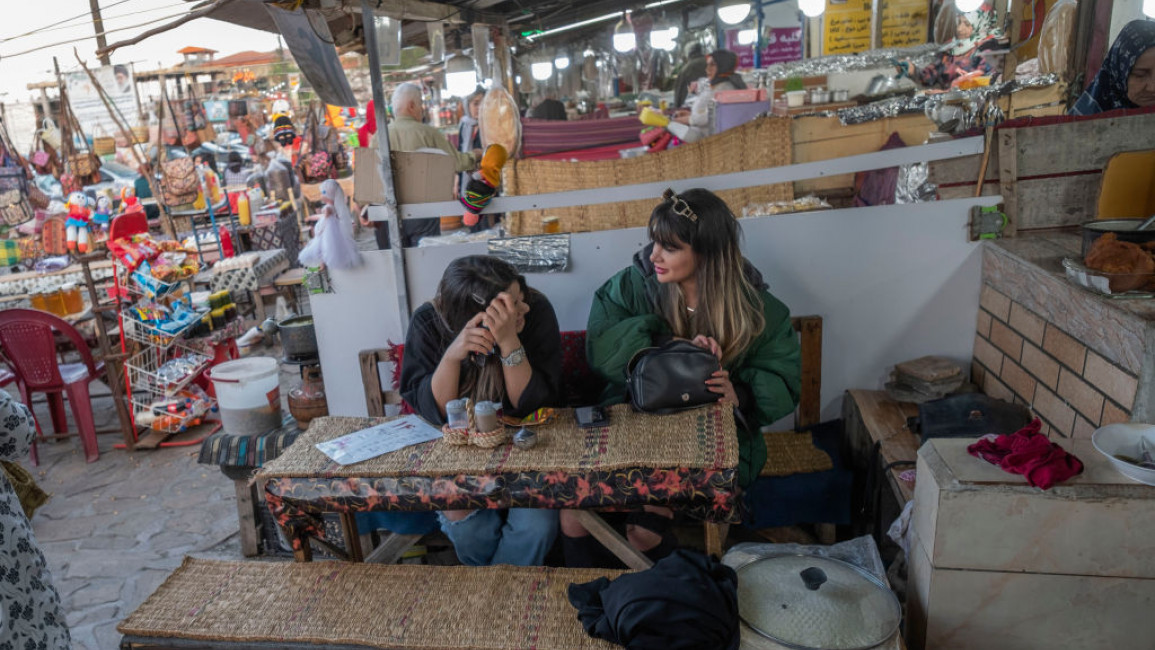Explainer: How kings and ayatollahs fought against and for hijab in Iran
Seven months after the death of a 22-year-old Kurdish girl, Mahsa Amini, in Iran's Islamic morality police custody, the authorities set to force all women to obey the obligatory hijab law.
On the other side, the women who participated in last year's nationwide anti-establishment demonstrations that began with protests against the hijab law vowed to defy the law.
This is not the first time that the Islamic hijab has transformed into a means of political activism in this country. The confrontation over the Islamic hijab between Iranians and those who have ruled their country is nothing new and not even a conflict restricted to post-revolution Iran.
It has been about a century since the authorities attempted to dictate their preferred hijab to Iranians; and the people, in response, resisted the obligations.
Pahlavis' fight against hijab
In 1936, the first king of the Pahlavi dynasty, Reza Shah, banned putting on a chador, niqab and burqa in public. He also banned traditional outfits for men.
Reza Shah had gained power in Iran after the 1921 coup, backed and facilitated by the UK. His vision of modernisation was established by imitating all aspects of the Western lifestyle.
His 1936 ruling, known as Kashf-e hijab, meaning the removal of hijab, only permitted women to cover their heads with a Western-style hat. The decree was received negatively and resulted in tensions between the people and the police, as the police were permitted to remove women's hijab forcefully.
Reza Shah's order was enforced until 1941, when he was ousted following the Anglo-Soviet invasion of the country, and his son Mohammad Reza Shah became the king.
Mohammad Reza Shah established power over the country with the 1953 coup, financed and plotted by the CIA. Since then, he deployed soft power against the Islamic hijab until the Pahlavi dynasty collapsed in the 1979 revolution. During his reign, wearing Western outfits became an indicator of class and intellect.
Ayatollahs' fight against not having hijab
What is known about the fight against obligatory hijab in Iran began less than a month after Mohammad Reza Shah's monarchy was officially toppled on 11 February 1979.
On Women's International Day that year, a group of about 5,000 women demonstrated against Ayatollah Ruhollah Khamenei's remark, saying: "I have received reports about women working naked at different ministries, and this is against the Sharia law. Women can participate in society but [only] with the Islamic hijab".
Khomeini, Iran's first supreme leader, had to wait 16 more months to see the Iranian society entirely being ruled strictly by the Sharia law.
During those months, his supporters imprisoned and executed nationalist and leftist activists who were the leading forces behind the social movement that toppled the monarchy. At the same time, the Islamists expanded their control over all branches of the establishment.
On 5 August 1980, in a speech, Khomeini gave a 10-day deadline to the government to find a solution for bi-hijabi, meaning not having a hijab. That was when the concept of Islamic manteaus was introduced to Iranians.
The long and loose gowns named "manteau" in Iran and the "maghnaeh" headcover were the clothes the government made obligatory in all state offices, schools and universities. Women could go to the streets with a head scarf and manteau, but their hair had to be entirely covered.
The new regulation was in total harmony with the Shia view of the Sharia law that allows women to cover their hair and the entire body except for the hands. Yet, the women, whom the establishment labelled as "bi-hijab", defied the Sharia law and the militias organised under the name of Komiteh (the Islamic Revolution's Committees) were tasked with arresting and punishing them.
But what was the exact punishment? No one knew. So, on 9 August 1982, the parliament passed the first law that criminalised being a bi-hijab, a crime punishable with 75 floggings. Nevertheless, it was difficult to define who was bi-hijab, as hijab not only is about covering the head but also includes women's outfits and how they appear in public.
The legislators, the Islamic Revolutionary Guard Corps (IRGC) cultural arms, and the Ministry of Culture continued passing more laws and releasing government circulars to define who was a bi-hijab and the related punishment.
By 1987, the Komiteh militias and gendarmery officers had two laws and a 50-page circular on how to deal with the bi-hijab people and clothing considered "not Islamic". According to those regulations, the producers, traders and consumers of such clothing could be punished with fines, closing their shops and workshops and 20 to 40 floggings.
The flogging of those whom the establishment considered bi-hijab continued until 22 May 1996, when in the fifth edition of Iran's Islamic Penal Law, the legislators replaced flogging with fine and jail sentence.
According to this law, being a bi-hijabi is punishable with 10 to 60 days of imprisonment. But the same law declares that "those who encourage vice" can be sentenced to one to ten years.
This is the same law that is in today's Iran being enforced. Because the country's Islamic judges consider removing the head cover as an encouragement to vice, women without a head cover still receive prison sentences.
However, this law is about to change with new regulations, and the police forces tasked with arresting the bi-hijab women would no longer encounter the citizens.
The authorities have yet to announce the details of the new guidelines for the hijab law. So far, the lawmakers, the judicial officials and the commander in chief of police forces, Brigadier General Ahmad Reza Radan, have revealed different plans for punishing bi-hijab women. But, people have yet to learn which procedure will be implemented.
The ambiguity over the authorities' latest strategies to punish bi-hijab women has increased after Supreme Leader Ali Khamenei on 4 April declared that "Kashf-e hijab is haram based on the Sharia law and Iran's politics".
Since then, the country's political and judicial entities have been contesting to introduce new hijab regulations, attempting to show loyalty to the supreme leader.



